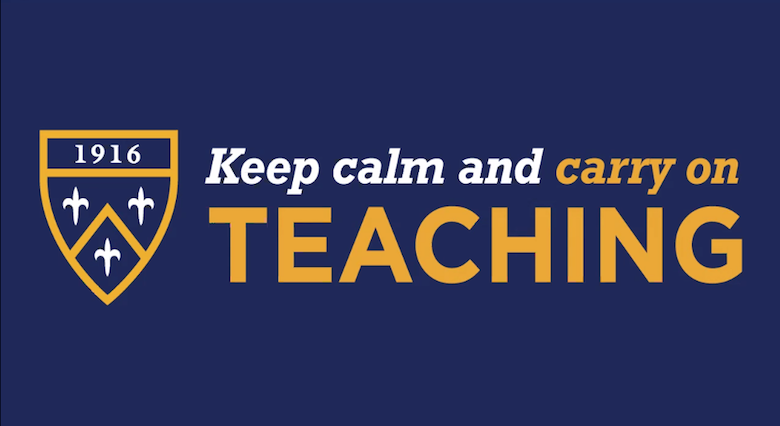The Office of Information Technology Services (ITS) has conducted a number of remote training sessions, guiding faculty about how to use Canvas, St. Joseph’s online learning management system, as the College transitions to remote learning for the remainder of the spring semester.
Moderated by Michelle Papajohn, the College’s vice president for information technology and chief information officer, the March 27 session of the “Carry On Teaching Town Hall” answered faculty’s logistical questions about the transition to remote teaching. A remote learning format is unfamiliar territory for many faculty members at St. Joseph’s, so the training sessions are a way to ease the fears of the pressure to pick up a new teaching style in an exceptionally short timeframe.
The webinar-style town hall also featured presentations from Rob Riley, Ph.D., provost and vice president for academic affairs; Eileen Jahn, Ph.D., and Raymond D’Angelo, Ph.D., both interim executive deans, and Amy Poland, Ph.D., associate dean for online learning.
“The words I want to emphasize are patience and empathy,” Dr. D’Angelo said. “We are not compromising by going remote. We’re adapting and adjusting during a global pandemic. Our academic experience will continue, although not in the way we had planned.”
Canvas Tip: ‘Do what you’re comfortable with’
Poland stressed that professors shouldn’t feel pressured to use all the bells and whistles offered in a Canvas classroom if they’re not well-versed in the technologies.
She said many online classes take at least several months to develop, and there is no expectation for professors to transform their traditional classes in that way — especially with such a short time frame.
“We want you to do what you’re comfortable with and for you to do the best job that you can,” Poland said.
Instead, Poland, an associate professor of political science, said she recommends that faculty familiarize themselves with Canvas and talk to students to see how individual classes will work best remotely. This can range from setting time limits on exams to surveying students about their experiences and preferences with online learning and figuring out a system that encourages communication throughout the remote classroom.
Dr. D’Angelo added that professors are not expected to use video or tech talks, though they are encouraged to use the Carry On teaching site. As with any other support needed, requests for assistance using the Carry On teaching site should be sent to techhelp@sjny.edu.
Dr. Jahn added to that sentiment, noting that faculty should remember there will be a learning curve with the transition to remote learning.
“We’ve been using two words to describe how we are during these times — that we’re accommodating and that we are passionate,” Dr. Jahn said. “And I hope you are that way to yourself, as well. I know many of you are nervous about teaching in a remote manner and doing a good job … but we will do the best we can.”

